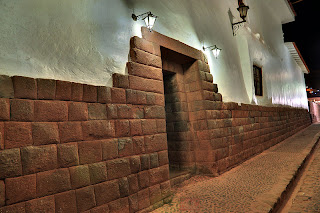Our house is filled with Persian carpets. Some were wedding presents, others housewarming gifts and still more were rugs purchased on trips to Iran. Our oldest one is a red and blue Kashani that my mother-in-law bought the year my husband was born. (I won’t say how old that one is.) The newest are two identical Qom beauties that hang on my office wall (that's it on the left). My personal favorite is a small black rug with a simple botteh design, better known to Westerners as the paisley. Over the years I’ve adopted one basic Iranian attitude: a house is not a home without handmade carpets on the floor.
My fascination with these paintings in threads became the inspiration for my first mystery novel, Frayed Silk, in which private investigator Leila Shirazi follows the trail of a stolen 17th century carpet and solves the murder of the thief. The book didn’t sell, unfortunately, but researching the novel gave me a whole new appreciation for carpet weaving. And in talking with friends and relatives about their own carpets, I gleaned another essential fact: Iranians consider carpet designs to be the highest form of Persian art.
The oldest known knotted rug is the Pazyryk Carpet, which Russian archeologists found in the frozen tomb of a Scythian chief in the Pazyryk Valley of Siberia. That rug has been carbon-dated to the 5th century BC. Because of similarities between its designs and carvings at Persepolis, the carpet is believed to have been created by Achaemenid weavers of ancient Persia. Embedded in solid ice, this carpet was preserved almost intact and is now exhibited in the Hermitage Museum in St. Petersburg, Russia.
Let’s skip forward a thousand years to the Safavid Dynasty (1501-1722), when the Persian carpet as we know it was born—the ones with intricate floral patterns having central medallions and sprays of flowers scattered across a plain field. The Safavid kings took what was then a purely tribal craft and elevated it to an art form by building carpet workshops in Isfahan, Kashan, and Kerman (which remain major carpet weaving centers today). They hired artists to design the motifs and workers to knot the rugs. Initially they created these carpets specifically for Safavid palaces and mosques and as gifts for neighboring royalty and foreign dignitaries. Later, the Safavids developed a flourishing carpet trade with the rest of the world. The Portuguese played a key role in introducing Persian carpets to Europe, and they used their Indian colony of Goa as a major distribution point.
Safavid carpets are classified according to their designs, and although there are many different ones, here are a few of my favorites:
Vase: Unlike carpets with a central medallion surrounded by flowering vines, these rugs have an overall design. Sometimes they depict a realistic bouquet of flowers emerging from a recognizable vase. In other designs, the vases are figurative, abstract forms representing vases, leaves, and flowers that are repeated throughout the carpet. Vase carpets were woven in royal workshops in Kerman, where carpet designers were considered among the most inventive of the Safavid period. These rugs are rare and highly prized by collectors today; last year one fetched an astonishing price of 9.6 million U.S. dollars at a Christie's auction.
Hunting: Often worked entirely in silk, these carpets reflect two of the Safavid kings’ favorite pastimes: falconry and hunting. They depict dynamic scenes of hunters on horseback, wild animals, and birds. Some hunting carpets have a central medallion, others an overall pattern.
Polonaise: Also known as Polish carpets, these rugs owe their name to a misunderstanding. They were once believed to come from a workshop in Poland that was known for its Persian-inspired designs. Later, researchers found that these carpets were actually made in the royal Safavid workshops in Isfahan. Many had been woven specifically as gifts to European royalty, hence the designs catering to European tastes. They were floral-patterned carpets with central medallions, worked in silk, with real gold and silver brocading throughout. I love a carpet with a mystery, so this was the type I picked for the stolen treasure in Frayed Silk.
Not a great deal has changed since Safavid times. Good Persian carpets are still made the same way, by hand in village homes or city workshops, designed by artists and commissioned by manufacturing companies who then sell and distribute the rugs to local bazaars and stores around the world. The romantic notion of the young carpet weaver working her hopes and dreams into a rug of her own design is, I’m afraid, pure fiction.






















